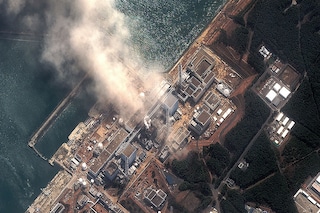Lessons from Fukushima: The gains from environmental disclosure
Carbon emission disclosures are voluntary but can pay off when disaster comes calling


In March 2011, the Tohoku earthquake and tsunami in Japan led to catastrophic meltdown at the Fukushima Daiichi nuclear plant, with long-lasting economic, ecological and social effects — indeed, plans to release treated wastewater were causing conflict with China in the summer of 2023.
The Fukushima disaster was exceptional, but planning for disasters must be part of any company’s risk assessment. In a new study published in the European Accounting Review, IESE Business School Professor Pietro Bonetti and co-authors Charles H. Cho and Giovanna Michelon look at the real results of the Japanese disaster on the cost of capital for Japanese firms.
In the years following the disaster, the cost of capital for Japanese firms rose by approximately 2 percentage points. But there was an important mitigator: firms that had disclosed carbon emissions in their financial reports prior to the tsunami saw a lower increase in their cost of capital: 1.2 percentage points.
Following the Fukushima disaster, all nuclear reactors across the country were closed, causing a considerable supply shortage and concerns about energy availability and affordability. Investors needed to know which firms were vulnerable, and how aware and prepared they were to absorb shocks of this kind. Environmental disclosure provided essential information on operating risk. The switch from “clean" nuclear power to fossil fuels also posed a risk, raising the specter of regulatory actions on polluting firms.
Though disclosing carbon emissions didn’t eliminate the rise in the cost of capital after the disaster — which applied across the board — firms disclosing information on how they historically managed their energy policies experienced a less severe shock.
Disclosure isn’t something a company can change course on instantaneously, given the information can be costly to collect. However, in the aftermath of the disaster, Bonetti and his co-authors note that many changed their disclosure practices: they increased the length of such sections in their sustainability reports, used more numbers, and made more references to long-term results and forward-thinking policies than they had in the pre-disaster reports.
A cynical tactic, but one that seems to have delivered: the co-authors observed that the cost of capital gap between disclosing and non-disclosing firms narrowed in the years following the disaster, which is “consistent with the finding that non-disclosing firms have subsequently increased their disclosure to reduce long-term effects on cost of capital," Bonetti says.
This backs the idea that environmental disclosure is not simply good PR in a time of instability, it can tangibly demonstrate that a firm is taking energy dependence, and its risks, seriously.
First Published: Dec 06, 2023, 11:06
Subscribe Now